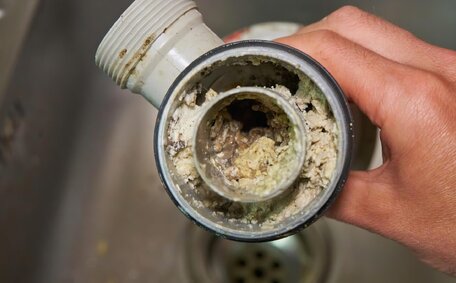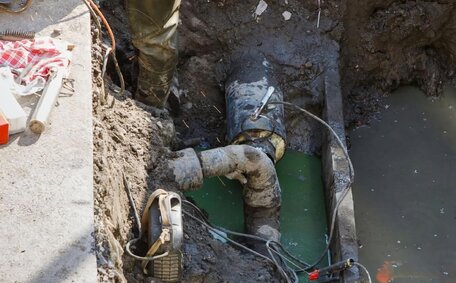How Pets Contribute to Blocked Drains
Our beloved pets can inadvertently cause blocked drains and plumbing issues in our homes, primarily due to their hair and the use of kitty litter.
Pet Hair
Pet hair is a primary offender for clogged drains, particularly in homes with pets. As your pet sheds, that hair can collect in pipes, and combined with soap scum and other debris, creates thick clumps that are among the most common causes of slow water flow.
Dog hair, with its denser texture, can easily tangle and mat, making its way into your plumbing with persistent problems. Brush your pup regularly, employing strategies to prevent pet hair from being washed down into your drains, like using drain covers to catch loose hairs.
Waste and Litter
Never flush faeces from small pets such as hamsters, guinea pigs, and rabbits, as it could clog pipes and damage your septic system. Instead, dispose of droppings in the bin to prevent your pipes from getting clogged.
Clumping cat litter, although convenient, can cling to pipes and is a known cause of blocked drains, especially when flushed down toilets or sinks. Opt for natural, non-clumping litter or soluble crystals to better safeguard your plumbing from clogs.
Toys, Bones, and Other Objects
Pets often play with toys without knowing that these can lead to blocked drains if they fall into sinks or toilets.
It’s crucial to quickly retrieve any objects that find their way into drain grates or fall down drains during playtime. Storing pet toys in baskets or containers can help prevent drain blockages and keep your home safe from accidental plumbing mishaps.
Prevention is Key
With careful planning, pet owners can keep their plumbing unblocked and functioning properly. Use drain strainers, groom your pets regularly, and be diligent about items that could fall down drains. Respond quickly to signs of a clog with strategies to clear the blockage or by calling a professional plumbing service to prevent severe issues.
Pet Hair and Fur Causing Drain Clogs
Pet shedding, from animals like dogs, cats, and rabbits, is a considerable contributor to plumbing clogs. As your pets shed, the hair and fur can accumulate in kitchen sink and tub drains as well as your sewer line.
Even pets with short fur can cause blockages, so it’s essential to collect their hair before it reaches the drain. Gather pet hair during grooming to prevent it from washing down and causing plumbing problems. Over time, the buildup of fur, food debris, and soap scum can create significant blockages, impairing the plumbing you rely on for clean water.
To prevent pet hair fur clogs, use drain covers and strainers while bathing your dog. Additionally, regularly check your sink and tub drains, flushing with water to clear accumulated fur and manually remove any clumps, wearing gloves to maintain hygiene.
Consistent brushing and grooming can reduce shedding and prevent fur from entering your drains. Prevent your pet’s shedding from impacting your plumbing with proactive drain maintenance.
Cat Litter Disposal and Plumbing Issues
Disposing of cat litter down the toilet may seem practical, but can severely impact your sewerage system.
Cat litter, meant to clump and absorb liquid, cannot break down like toilet paper and builds up in pipes, quickly causing clogs and blockages.
Clumping clay and silicone litters are especially problematic because they expand when wet and bind to pipe walls. Even 'flushable’ litters that claim to be septic-safe may not dissolve fully, potentially leading to blockages in critical household piping.
The best way avoid drainage issues is to refrain from flushing any type of cat litter.
Quickly absorb liquid waste with litter and dispose of the clumps soon after to avoid issues. Scoop solid waste from the litter box into a bag for disposal in the trash.
Stay vigilant when cleaning litter boxes to prevent stray litter from potentially clogging drains. A drain screen can also help catch litter and prevent it from entering your plumbing.
While it may seem convenient, flushing litter creates severe risks in your sink and toilet plumbing. By disposing of all types of cat litter into the garbage rather than down toilet, you can avoid expensive and unpleasant clogs.
Proper Pet Waste Disposal to Prevent Clogs
Disposing of pet waste properly is crucial to preventing clogged drains and plumbing issues. As pet owners, we have a responsibility to dispose of waste in a way that protects both your drainage systems and the environment.
Don’t Flush Solid Waste
It might seem like a good idea to flush solid pet waste like cat litter or exotic animal droppings down the toilet.
However, this causes major problems. Toilets are only designed to handle flushable, septic-safe items like toilet paper. Toilets are only designed to handle flushable, septic-safe items like toilet paper.
Solid pet waste should be gathered and bagged, avoiding any mishaps causing blockage in your home drainage. Never dump litter, poop, or bedding into your toilet or sinks.
Absorb Liquids Before Disposal
For urine or other liquid animal waste, avoid pouring it directly into drains. First, absorb the moisture withtowels, pet pads, or litter. Once soaked up, bag the waste and toss it in the garbage.
You can also pour liquid waste responsibly onto areas where the water your pets produce won’t harm your plumbing or your local water system. Just as you manage tree root intrusions to protect your plumbing, ensure appropriate measures to deal blocked drains are taken by disposing of liquid pet waste at a safe distance from any edible plants.
Prevent Accidents
Securely shut toilet lids between uses so pets can’t access them.
Be vigilant when using cleaning products to ensure no waste escapes, potentially getting your drain blocked, or consider enlisting a professional for thorough cleaning.
By disposing of pet waste properly and preventing plumbing mishaps, you can maintain clear pipes while keeping your furry friends healthy and happy.
Types of Pet Toys and Bones That Can Get Stuck
Specific pet toys and bones can get stuck in drains, resulting in clogged pipes and plumbing issues. Rubber, plastic, and vinyl toys remain notorious as they combine with fats oils down the drain, creating stubborn clogs.
Rubber Toys
Dog chew toys, like Kongs and balls, can get slimy; if washed carelessly, they might enter and obstruct your drains. Over time, these rubber toys get brittle and pieces can break off, which can do serious harm to your drains.
Plastic Toys
Hard plastic toys pose a risk as they stay solid before goes down the drain, potentially causing blockages. Squeaky toys and plastic balls beloved by your dog cat companions, tend to be the same size as drain openings. Ensure any stray plastic toys are promptly retrieved.
Rawhide and Bones
Natural rawhide chews and bones are meant to dissolve with chewing, but substantial pieces can find their way down drains and cause blockages. However, large chunks can still get jammed in pipes, calling for the kind of obstruction-clearing expertise us orders over for professional plumbers to handle. Choose digestible alternatives like bully sticks instead of rawhide, and utilise your hot water system to rinse toys, reducing the risk of a clog.
Preventive Measures
Teach children to keep toys away from sinks and toilets, and store them safely in designated bins when not in use. Educating children on keeping toys away from sinks and toilets is key.
When to Call a Professional for Pet Hair Clogs
As a pet owner, you likely deal with pet hair clogs from time to time. But when do these nuisance clogs turn into a plumbing emergency requiring professional help? Here are some signs blocked drain issues may be present, prompting a call to the plumber for a pet hair clog:
Complete Blockage
A completely blocked drain that doesn’t respond to plunging, drain snakes, or cleaners suggests a significant clog might be present. Just like human hair, pet fur can bind tightly together, forming solid clumps within the plumbing your house relies on, resisting DIY methods like a baking soda and vinegar mix.
Persistent Backups
If you repeatedly experience drain backups and gurgling despite efforts to clear the clog yourself, the problem may be beyond your capability. Recurring clogs point to excessive pet hair buildup that professionals have better tools to address.
Sewer Odours
Catching a whiff of sewage smells in your home could suggest that pet waste in drains pipes can lead to blocked passages and sewer gas backup. Bad odours are a clear indicator that pet waste causes blocked drains, signalling it’s time for thorough drain cleaning.
Multiple Clogs
Should you encounter clogs in sinks, tubs, and main drain lines, the issue could be more pervasive, affecting your entire drainage system. Widespread pet hair accumulation in your plumbing system often necessitates professional hydrojetting.
Slow Drains
Sluggish drains throughout your home may indicate substantial pet hair lurking in your pipes despite no complete clogs yet. Addressing the issue early on prevents major blockages.
In case of severe pet hair clogs, reach out to our experts at North Mead Plumbing on 1300 555 1234 – we’re well-versed in handling pet hair blockages and can restore proper drainage flow.






